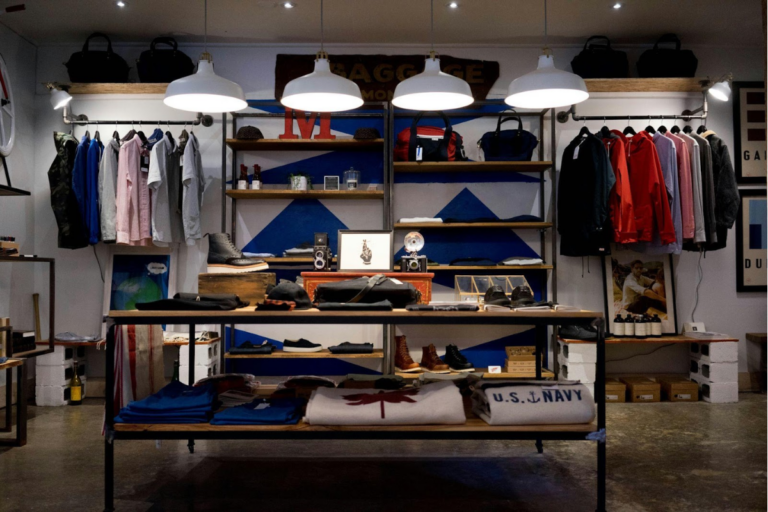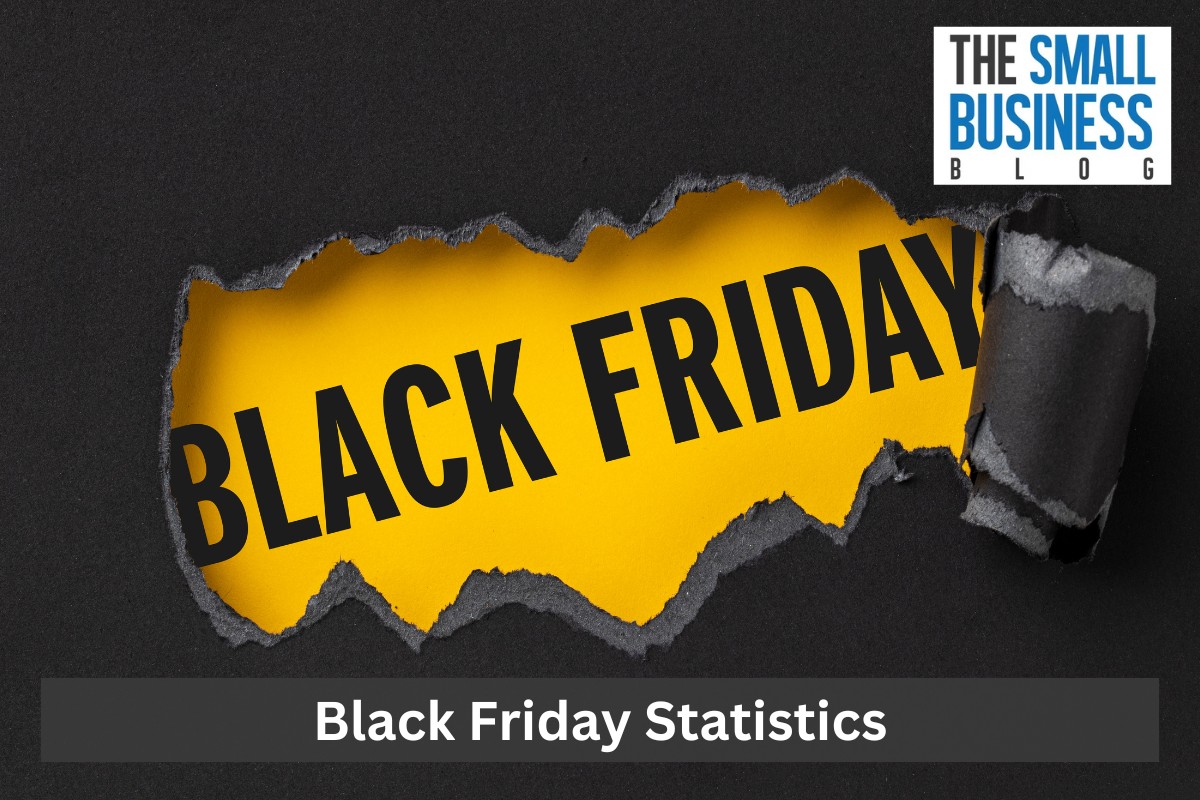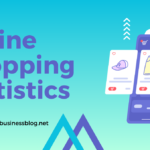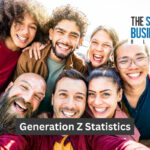Black Friday is known in many places around the globe, although it is not yet recognized by every country.
Black Friday started in the US, allowing people to complete their Christmas shopping at discount prices.
The date isn’t fixed, although it has become traditional for it to fall on the first Friday after Thanksgiving.
As with most good things, it started small.
However, as the following Black Friday statistics will show, it’s become one of the most important shopping days of the year.
Black Friday isn’t an official public holiday.
However, many businesses, except retail-based ones, allow their employees the day off.
Post Contents
- 1 Key Statistics
- 2 How Black Friday Started
- 3 Why Black Friday Is So Popular
- 4 Top Black Friday Statistics
- 4.1 1. Shoppers Spent $9.12 Billion On Black Friday 2022
- 4.2 2. Online Toy Sales Saw A 285% Increase In Sales
- 4.3 3. 49% Of Buyers Choose A Supplier Based On Shipping Costs
- 4.4 4. Desktops Saw the Highest Conversion Rates
- 4.5 5. Amazon Dominated Online Sales
- 4.6 6. Online Shoppers Passed 100 Million For the First Time
- 4.7 7. 31% Of Shoppers Prefer Shopping At Physical Stores
- 4.8 8. The Majority Of Black Friday Customers Go To The Store Between 7 AM And 10 AM
- 4.9 9. 58% Of Generation Z Rely On Black Friday
- 4.10 10. 79% Of Shoppers Are Influenced By Social Media Content
- 4.11 11. 23% Of Customers Are Looking For A Bargain
- 4.12 12. Lego Remains The Most Popular Children’s Toy
- 4.13 13. Shopify Plus Is The Top Black Friday Cart Software
- 4.14 14.79% Of Customers Want A Reply Within 24 Hours
- 5 Summing Up
Key Statistics
- Shoppers spent $9.12 billion on Black Friday 2022
- Online toy sales saw a 285% increase in sales
- 49% of buyers choose a supplier based on shipping costs
- Desktops saw the highest conversion rates
- Amazon dominated online sales
- Online shoppers passed 100 million for the first time
- 31% of shoppers prefer shopping at physical stores
- The majority of Black Friday customers go to the store between 7 am and 10 am
- 58% of Generation Z rely on Black Friday
- 79% of shoppers are influenced by social media content
- 23% of customers are looking for a bargain
- Lego remains the most popular children’s toy
- Shopify Plus is the top Black Friday cart software
- 79% of customers want a reply within 24 hours
How Black Friday Started
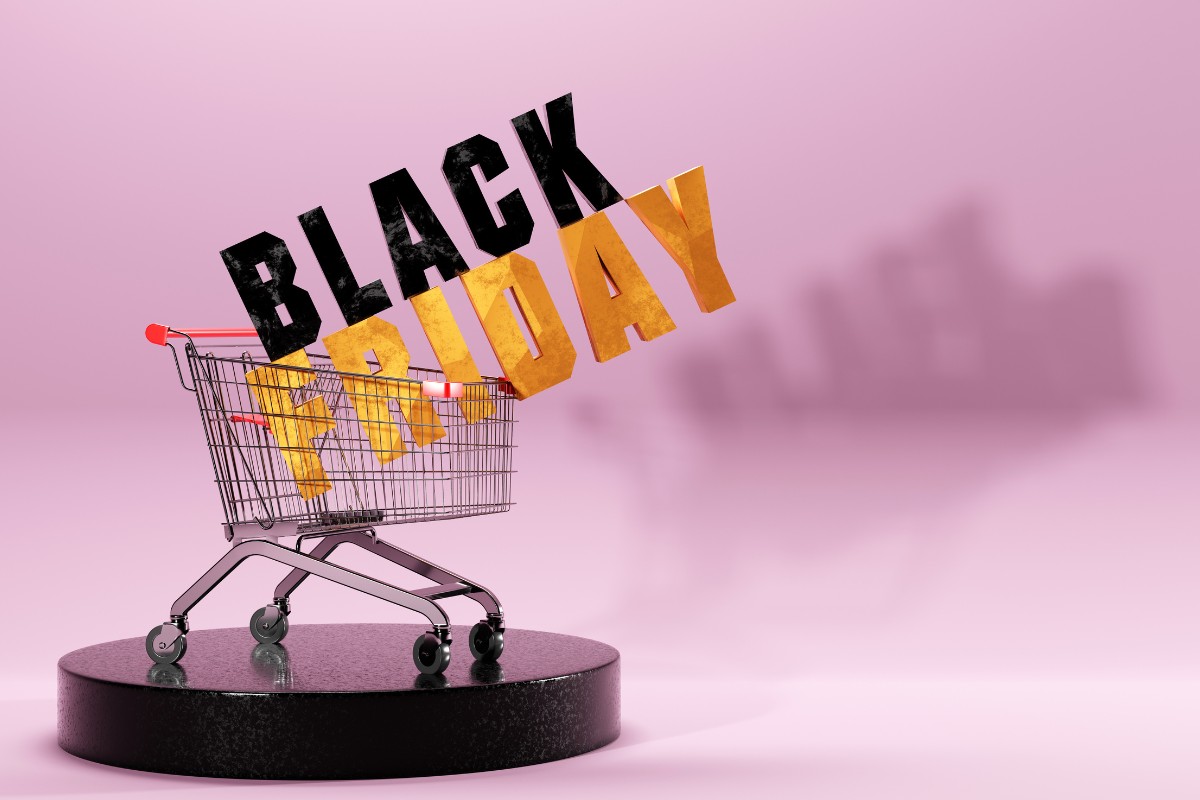
The term ‘Black Friday’ was originally used in Philadelphia as long ago as the 1960s!
At the time, many people flooded the area to see the Army-Navy football game and look for any bargains available after Thanksgiving.
The congestion led to the local police calling it Black Friday, simply because it was one of the worst days of the year to be part of the Philadelphia police force.
Interestingly, local stores didn’t like the negative name and tried to rebrand it as ‘Big Friday’.
The rebranding didn’t work.
However, the idea of a discount day, effectively the day after Thanksgiving, did take.
Retailers quickly realized they could make a lot of money in one day, more than even in the post-Christmas sales.
It remained a localized event until the 1980s when the term was used by many businesses as it marked when they started to turn a profit for the year!
In the early 2000s, the Black Friday premise started to spread across the US, gradually becoming more popular.
By 2010 it was becoming recognized in other countries.
However, it has only been in the last 5-10 years that it’s become an event that roughly half the planet celebrates.
Why Black Friday Is So Popular
The main reason Black Friday is so popular is that it allows consumers to get great discounts on products.
It can help people afford Christmas, even when funds are limited.
It’s become known as the start of the holiday shopping season.
Today, Black Friday is more than just one day, it often lasts an entire week.
The popularity isn’t just connected to the deals available.
Because stores, both physical and online, are keen to offer as many discounts as possible, consumers will find a huge array of product choices.
Stores are generally open longer than usual and many shoppers love the adrenaline rush associated with getting to the store early and fighting for the best bargains
Of course, since the global pandemic, Black Friday online shopping has become increasingly popular.
Most businesses find that customers are more receptive to offers and subscriptions on Black Friday, This makes it the perfect opportunity to increase their customer base.
Top Black Friday Statistics
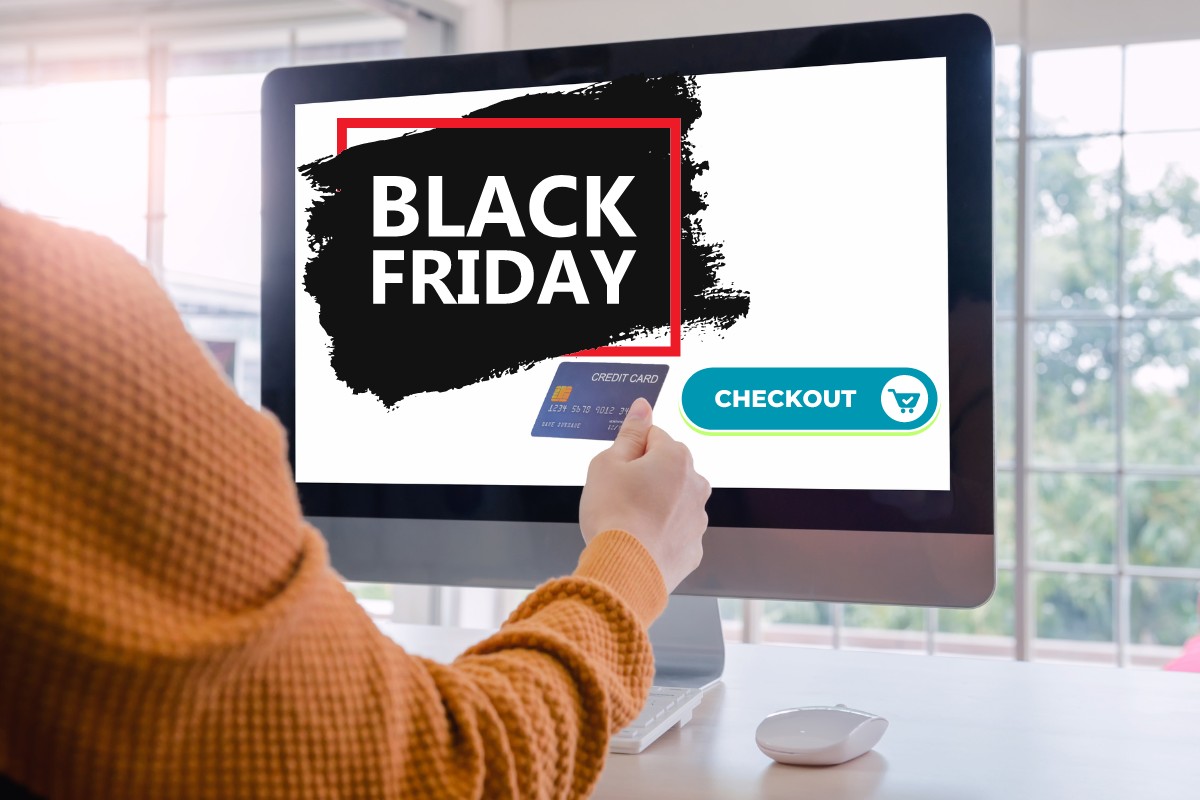
1. Shoppers Spent $9.12 Billion On Black Friday 2022
Black Friday in 2022 gained the record as the most profitable Black Friday to date.
Shoppers spend an impressive $9.12 billion.
However, even more impressive was the following Monday, known as Cyber Monday.
In 2022 shoppers spent over $11 billion, creating another new record.
It’s worth noting that while inflation pushed prices up in 2022, the discounts offered by businesses were also higher, effectively negating the rise in inflation.
Adobe Analytics found that electronic discounts offered on Cyber Monday peaked at 8% in 2021.
They were a far more impressive 25% in 2022.
Sales have been gradually increasing.
In 2020 businesses took $8.5 billion on Black Friday, in 2021 this increased to $8.9 billion, and in 2022 saw $9.12 billion.
Cyber Monday has seen a similar trend.
In 2020 sales were $10.8 billion, and in 2021 they were fractionally less at $10.7 billion.
However, 2022 saw an increase to $11.3 billion!
(Adobe Analytics)
2. Online Toy Sales Saw A 285% Increase In Sales
Toy companies were clearly struggling in 2022, perhaps a result of increased inflation and post-pandemic caution.
However, Black Friday threw them a lifeline.
In just one day they saw a 285% increase in sales compared to the average daily sales throughout October.
It may not be enough to completely transform their fortunes but it certainly won’t hurt.
Toys weren’t the only benefactor.
Electronics also benefited. The industry as a whole saw an increase in sales of 19%.
But, home electronics fared much better with an increase of 200% compared to an average October trading day.
Interestingly, store pick-ups were lower in 2022 than in previous years, suggesting that more consumers are choosing to shop online and have items delivered to their homes.
This is in keeping with the general trend toward online shopping.
(Adobe Analytics)
3. 49% Of Buyers Choose A Supplier Based On Shipping Costs
A survey of the 2022 Black Fridays sales by Financesonline found that nearly half of all shoppers were influenced predominantly by shipping costs.
The cheaper the shipping the more likely it was a consumer would choose the supplier.
As many as 49% of consumers were swayed by free shipping.
That’s something all businesses should take note of.
36% of shoppers admitted to being persuaded to buy by specific promotions, especially anything being offered on a limited-time sale.
It would be interesting to compare this figure to how much funds these consumers were really saving.
A further 21% based their purchasing decisions on how easy a site or app was to use.
The more intuitive the site the more likely it was that the consumer would choose to buy through it.
After all, most consumers have limited time and need to check a variety of sites while looking for different products, the easier a site is to use the more likely it is to be popular.
The survey also found that 20% of consumers chose a supplier based on whether they could buy products online and then pick them up in-store.
This suggests people were in a rush for the product or didn’t want to pay shipping.
(Financesonline)
4. Desktops Saw the Highest Conversion Rates
Generally, mobile devices have become the most popular option when going online.
Since 2016 more people access the web via a mobile device than a desktop.
However, on Good Friday and Cyber Monday, desktops were the more popular option for conversions.
The survey doesn’t disclose how many people accessed sites via mobile devices versus desktop, but it does confirm desktop customers were more likely to convert.
This is likely because desktop screens are bigger, it’s easier to compare suppliers and products, and completing the ordering/purchasing process is simpler online.
The actual conversion rate for Black Friday 2022 was 6.9% for desktop visitors.
In contrast, visitors using tablets achieved a 4.8% conversion rate and smartphones just 2.9%.
(Financesonline)
5. Amazon Dominated Online Sales
Amazon is listed as making $513 billion in 2022.
As an online retail giant, it’s not surprising that it dominated the online sales market for Black Friday.
The fact that you can purchase almost anything on Amazon helps.
According to the latest figures, in 2022 Amazon had 24.2% of the Black Friday online sales market.
Best Buy achieved just 7% of the sales, and Walmart consolidated third place with 4.6% of sales.
Macy’s managed 2.9% of online sales, and Kohl took 2.1%.
The rest of the sales were taken by a multitude of businesses, all with small percentages.
(Financesonline)
6. Online Shoppers Passed 100 Million For the First Time
As mentioned, Black Friday has grown dramatically in popularity.
This is illustrated by the sheer number of US shoppers.
In 2017 there were 174 million visitors to stores across the country.
By 2019, this had increased to 189 million, over half the US population!
However, 2021 saw a drop to 186 million, this is likely due to the global pandemic.
Naturally, this drop wasn’t due to an unwillingness to spend.
Instead, buyers were pushed online.
In 2021, for the first time, the number of online shoppers during Black Friday exceeded 100 million.
That’s an 8% increase on 2020.
While the pandemic seems to be behind us, the change in shopping and working trends seems likely to stay.
That means there is likely to be a steady climb in the number of people shopping online.
(Financesonline)
7. 31% Of Shoppers Prefer Shopping At Physical Stores

Although online shopping has become more popular, there are still plenty of people who like to visit physical stores and shop.
There are several reasons why this is the case.
One of the most compelling is that going to the store allows you to touch and play with the products.
This can provide inspiration and confidence that you’re purchasing the right thing.
Another reason, which the Deloitte survey found to be the case in 36% of shoppers, was the excitement of being in-store on Black Friday.
For many, it’s an adrenaline rush as you fight your way through the crowds to get the best deals.
Adopting this approach helps you to feel part of something bigger.
Retailers have also found it helps people to spend more than they intended.
(Deloitte)
8. The Majority Of Black Friday Customers Go To The Store Between 7 AM And 10 AM
If you plan to go to the store on Black Friday then you need to appreciate that there are a limited number of deals.
Stores generally put the biggest discounts on end-of-line stocks.
That means it’s on a first-come, first-served basis.
In short, the earlier you get there the better your chances of getting a bargain.
As many as 36% of shoppers understand this urgency and plan to get to their first store between midnight and 6 am.
These are the dedicated shoppers, often waiting in the cold to get the best deal.
Other shoppers, who can’t wait outside for hours for the shops to open, intend on getting there between 7 am and 10 am.
In fact, 46% of shoppers fall into this category.
Just 17% of shoppers are planning to visit Black Friday stores but have no idea what time they will get there.
These are potentially the casual shoppers, looking for bargains but nothing specific.
(Deloitte)
9. 58% Of Generation Z Rely On Black Friday
Generation Z refers to people born between 1997 and 2010.
This is the first generation born with computers as standard and unused to life before the internet.
Unfortunately, Generation Z faces an economy with climbing inflation, unsteady employment, and increasing house prices.
They are the first generation to consider not purchasing a home.
As such, this generation is very aware of money.
It’s reflected in the latest surveys which show 57% of Generation Z rely heavily on Black Friday to get their Christmas shopping done at reasonable prices.
They are not alone, 54% of Millennials also rely heavily on Black Friday.
However, Baby Boomers, those born between 1946 and 1964, seem to be less cautious with cash.
Only 37% of this generation rely on Black Friday each year.
(Deloitte)
10. 79% Of Shoppers Are Influenced By Social Media Content
Social media is viewed by billions every year and has become known as the best way to advertise a brand, boost brand recognition, and gain new customers.
That’s why it’s interesting that many stores forget about online advertising for Black Friday.
An advert on your brand’s web page is not enough.
If you want to reach as many people as possible you need to be using social media.
This is especially important when looking for Black Friday sales.
People look at social media to find inspiration, especially when they don’t know what gift to get someone.
The right social media ad or post can reach billions of people and create hundreds or even thousands of sales.
The fact that 79% of shoppers state they are highly influenced by social media content when choosing products means businesses need to devote time to social media.
One good post can attract a customer, they will attract more.
(Stackla)
11. 23% Of Customers Are Looking For A Bargain
While some customers are looking for specific items, many are simply looking to sort Christmas presents early.
Of those who know what they want, the majority are looking for electronic goods.
These will be to replace existing ones at the end of their life, as opposed to new additions to the home.
People simply looking for inspiration will start by looking at deals.
In fact, 23% of people will look at what items are on sale before they make any purchasing decision.
A further 18% are more interested in whether the item is local.
These are the ones likely to order and even pay online but collect in-store.
They like to know that they can easily return items if desired.
17% of consumers will make decisions on purchases based on reviews left by other customers.
These people don’t generally trust reviews left on a brand website.
Instead, they will look at social media and dedicated review sites.
If what they see is favorable then they are likely to purchase.
A further 12% will be heading to the shops looking for items which have been recommended to them.
They will know what the items are, what price they normally are, and what discount they should be getting.
Finally, 11% of people will simply be looking for new products.
That doesn’t mean new items to replace existing appliances.
It means products that are new to the market, potentially making them exciting and unique.
(IMI International)
12. Lego Remains The Most Popular Children’s Toy
Finding the right toy for children is never an easy task.
Of course, there will be the latest product that every kid wants but not everyone can have.
However, past the obvious trend, it is interesting to note the latest survey still shows Lego as the most popular search choice.
Search results from Amazon show that, in the children’s toys category, 40% of searches related to Lego.
A further 10% of searches include Crayola.
The results do vary according to the store you choose.
On the target website, Osmo is the most popular, with 30% of searches including this word.
A further 20% of Target searches include Creativity For Kids, while just 10% search for B. Toys.
Kohl also has an interesting take on the children’s toy search.
It finds 20% of shoppers are searching for Step2 and 10% are looking for Barbie.
Fisher-Price and Hot Wheels also take 10% each.
Surprisingly, Nerf is also a popular search term with another 10% using this term in the search box.
(Edge by Ascential)
13. Shopify Plus Is The Top Black Friday Cart Software
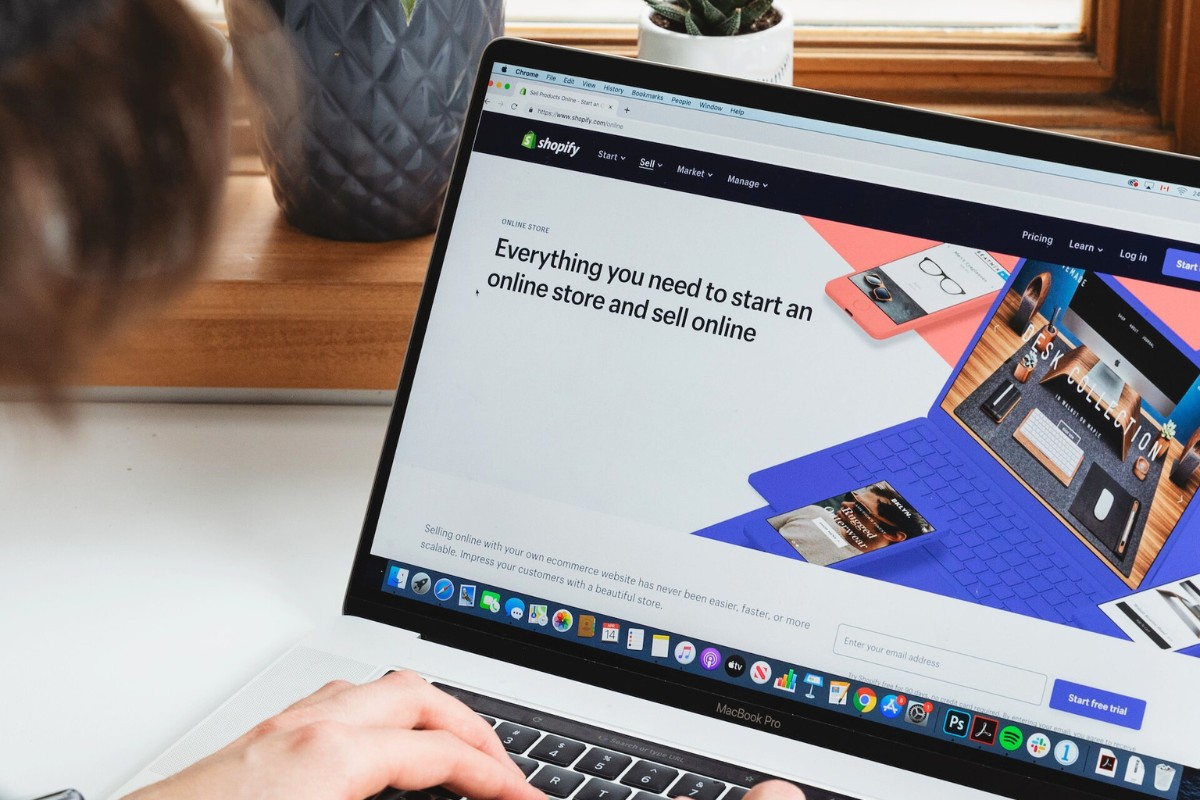
Did you know that 77.7% of shopping carts are abandoned on Black Friday?
That’s the global figure.
In just the US the abandonment rate is higher, at 79.8%.
In many cases, this is simply because customers add items to the cart just to make it easier to compare to other stores.
However, in some cases, people are abandoning carts simply because the checkout process is too slow or cumbersome.
Many businesses overlook the importance of their checkout software.
It’s essential that it can scale up and handle the increased customer load during Black Friday.
The most popular shopping cart software is Shopify Plus.
It’s cloud-based making it very efficient when working with internet pages.
It’s easy for consumers to use and it’s fast.
For businesses, it proffers an array of analytics, payment processing options, and even allows multi-channel sales.
Squarespace is another popular option, as is WooCommerce.
You simply need to make sure your software can handle the extra customers without costing you sales.
(Financesonline)
14.79% Of Customers Want A Reply Within 24 Hours
Replying to customers quickly should always be a priority, regardless of what the issue is.
Prompt and helpful responses encourage customer satisfaction and this is reflected in reviews.
Don’t forget that even one negative review can seriously damage your reputation.
While customers are usually happy with a response within a day or two, this won’t work on Black Friday.
The latest survey shows that 79% of customers expect a reply to any query within 24 hours.
However, 40% of customers also expect a reply within one hour.
After all, Black Friday is for a set period, people need fast answers to help them make the right decision.
It’s worth noting that customers are generally more positive on Black Friday, with a 6.25% increase in positive sentiments.
(Sprout Social)
Summing Up
Black Friday may have a slightly murky beginning.
But, as the Black Friday statistics show, it has evolved dramatically since its early days.
Today, it’s an incredibly popular option across all generations and looks set to become even more popular.
Sales numbers, both in visitors and revenue, are increasing every year.
While there may be a little more interest in online options, it doesn’t appear that the pleasure of visiting physical stores will be eliminated any time soon.
As a business, you need to make sure your Black Friday campaigns are all over social media.
As a consumer, you’ll need to keep your eyes open to find the best possible deals.
As the statistics show, Black Friday is worth the effort.




